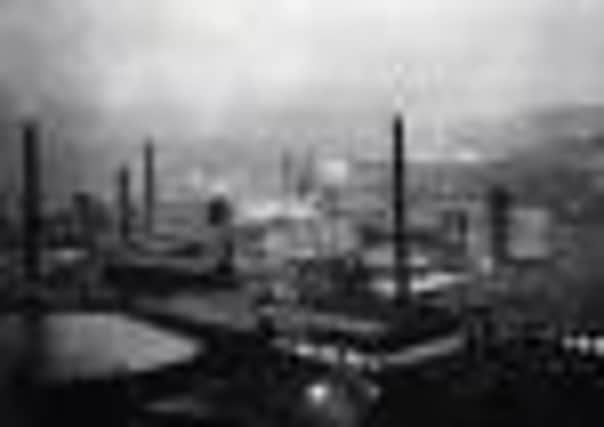Industrial age that helped weave threads of our identity


EVERYONE living in Yorkshire is an immigrant. Over the past 10,000 years, waves of immigration have washed up on the North Sea beaches or come overland from all other directions. The fascinating questions are – where did the people of the Ridings come from, when did they arrive, and can DNA discover the amazing richness and diversity of the pudding that is Yorkshire?
After the upheavals of the Viking age, immigration continued but on a less dramatic scale. In the late 11th century Yorkshire resisted the Norman takeover, forcing William the Conqueror to harry the north and exact terrible vengeance. To be sure, there was significant cultural and social change, much of it forced as the Norman elite asserted itself, but so few crossed the Channel after 1066 that their DNA is unlikely to have made much impact. Or perhaps it did? Only testing will tell how Normanised the county became, which is one of the reasons why this week in the Yorkshire Post we have launched Yorkshire’s DNA, a groundbreaking project to discover the roots of the county’s identity.
Advertisement
Hide AdAdvertisement
Hide AdThe medieval wool trade linked Yorkshire with the early European textile production centres of Flanders and Italy, but the great monasteries and landowners sold to travelling merchants, men who came, bought and left. Aside from the catastrophe of the Black Death after 1346 (when many DNA lineages probably perished), significant population movements only took place when the industrial revolution began. As textile production and other processes mechanized and the cities of Yorkshire mushroomed in the late 18th and 19th centuries, people moved off the land to work in the mills and factories.
Rooted for so long on the land, living and dying close to where they were born, people began to mix in the teeming tenements of Leeds, Bradford, Huddersfield and Sheffield. In the late 19th century, affordable railway journeys meant people headed for London and beyond.
Immigration on a larger scale began at the same time. Often fleeing persecution in Eastern Europe, Jewish families arrived in Yorkshire, and Leeds is home to the third largest community in Britain after Manchester and London. In Bradford, the third largest group of South Asians has settled, behind Leicester and London. All of these groups and others enrich Yorkshire’s DNA.
DNA testing can light pathways back into Yorkshire’s past as well as analyse the composition of the modern population. It can tell immense stories of deep ancestry, of a time far beyond memory, of lost generations beyond the reach of genealogy or written record. And it does not matter how far emigrants from Yorkshire may have travelled, their DNA has travelled with them. Even on the other side of the wide world, genetic testing can find Yorkshire’s children and bring them back home.
Advertisement
Hide AdAdvertisement
Hide AdOn December 18, 1994 archaeologists discovered a remarkable cave at Chauvet in Southern France. It turned out to be an ice age refuge, a place where our ancestors overwintered the millennia of intense cold, sheltering from the bitter snowstorms, a time when Britain lay sleeping under a blanket of ice and was entirely deserted.
Before they entered the cave, the archaeologists shone bright arc-lights into the black interior. They could see that the walls were covered with extraordinarily beautiful paintings. The fauna of the last ice age rumbled across an imagined landscape; herds of bison, mammoths, wild horses, woolly rhinoceros and deer. The occupation of Chauvet was dated very early, to between 30,000BC and 23,000BC. It was the oldest of the refuges.
On the soft clay floor of the cave, the archaeologists noticed the footprints of a little boy walking away into the darkness. He carried a pitch-pine torch and was the last to see the magical paintings, for immediately after he came a landslide sealed the entrance to Chauvet and for 25,000 years, as the world outside changed, it passed out of all memory.
In 2012 geneticists and historians working for the Yorkshire’s DNA project have been able to infer that the boy was an ancestor of around four per cent of all men living in Britain, 1.2m in all. This is an extraordinary echo of our collective past. In using DNA to write a people’s history of Yorkshire, we hope to find descendants of the little boy and open a new vista of the past to those who carry his marker.
www.yorkshiresdna.com.
The first results of testing will be revealed On November 1 at West Yorkshire Playhouse along with a guest lecture. Tickets: 0113 213 7700.